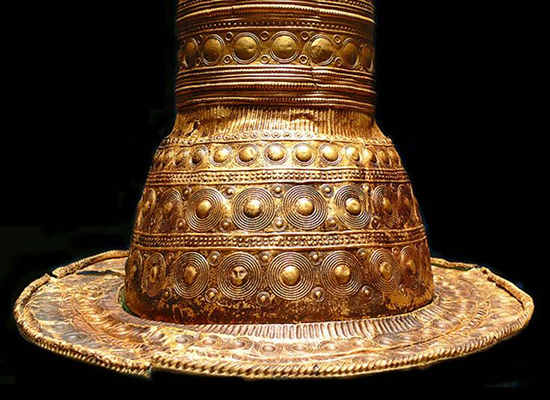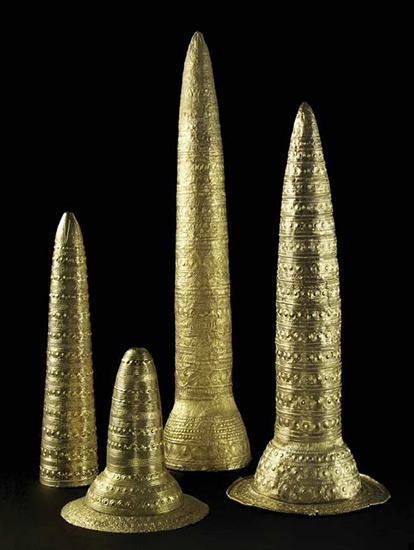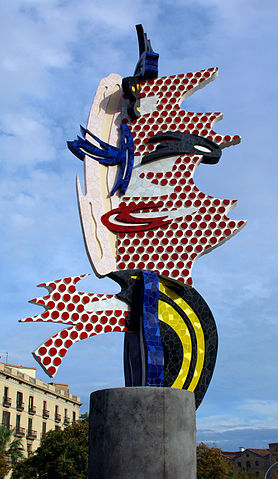

Golden hats (or Gold hats) (German: Goldhüte, singular: Goldhut) are a very specific and rare type of archaeological artifact from Bronze Age Europe. So far, four such objects are known. The objects are made of thin sheet gold and were attached externally to long conical and brimmed headdresses which were probably made of some organic material and served to stabilise the external gold leaf. Wikipedia article, Golden hat
These are dubbed hats and ceremonial hats, but clearly not for ceremonies that entail vigorous nodding. Our best knowledge is archaeological hearsay; those who knew are now dust. The hats date from about when the Palace of Minos burnt down (1400 BC) and when the Upanishads were composed (800 BC). Important civilizations existed by this time and humanity was well beyond cave-dwelling gristle-chewing primates.
The Golden Hats have an eerie resemblance to the millinery choices of both Gandalf the Grey and the Wicked Witch of the West. Wizards, witches, peaked hats. Those who knew are now dust but we may yet know the who and how of these golden cones. Example: King Tutankhamun’s mummy was revealed to the modern world in 1922. Reams of data were recorded. Since then humanity has created radiocarbon dating, the MRI, and has already had a misdiagnosis and a rediagnosis of the pharaoh’s back deformity. It’s probable that science will develop tools that probe artifacts in new ways, revealing now-hidden information.
As for peaked hats, are they a faint memory of long-past magical meanings? That this could be fact is seductive to us in our faraway age. A silken thread intact all the way back to our forbearers’ minds. Numinous. But did the Romans, the Greeks use any magic::peaked-hat equation? Or 3rd Century AD Europeans?
One has to ask.
__________________________________________
This blogpost is a follow-up to the last, Mother Nature’s Spheres which looked at the interesting fact that natural spheres often occur in groups. This snagged my attention a year or so ago and now I have quite a collection of examples of Fields of Rounds on Pinterest. Not only nature-made but created by humans, in ones and twos and fields of rounds.
Look at the image at the top of this post — notice how many ways rounds are used. Round marks are easier to make than diamond or heart shapes. Also they seem to speak more directly to our attention. Brains of critters other than us are hardwired to recognize specific shapes, patterns, motions. I wonder if humans have evolved a sensitivity to rounds [mandalas] and fields of rounds [Yayoi Kusama’s polkadots] — and if so what evolutionary advantage that would possibly bestow. My guess is as good as a scarecrow’s. Yet I ask you to join me in noticing how often our eyes fall on that motif in farmlands and galleries, in ornamentation and on living skins.



